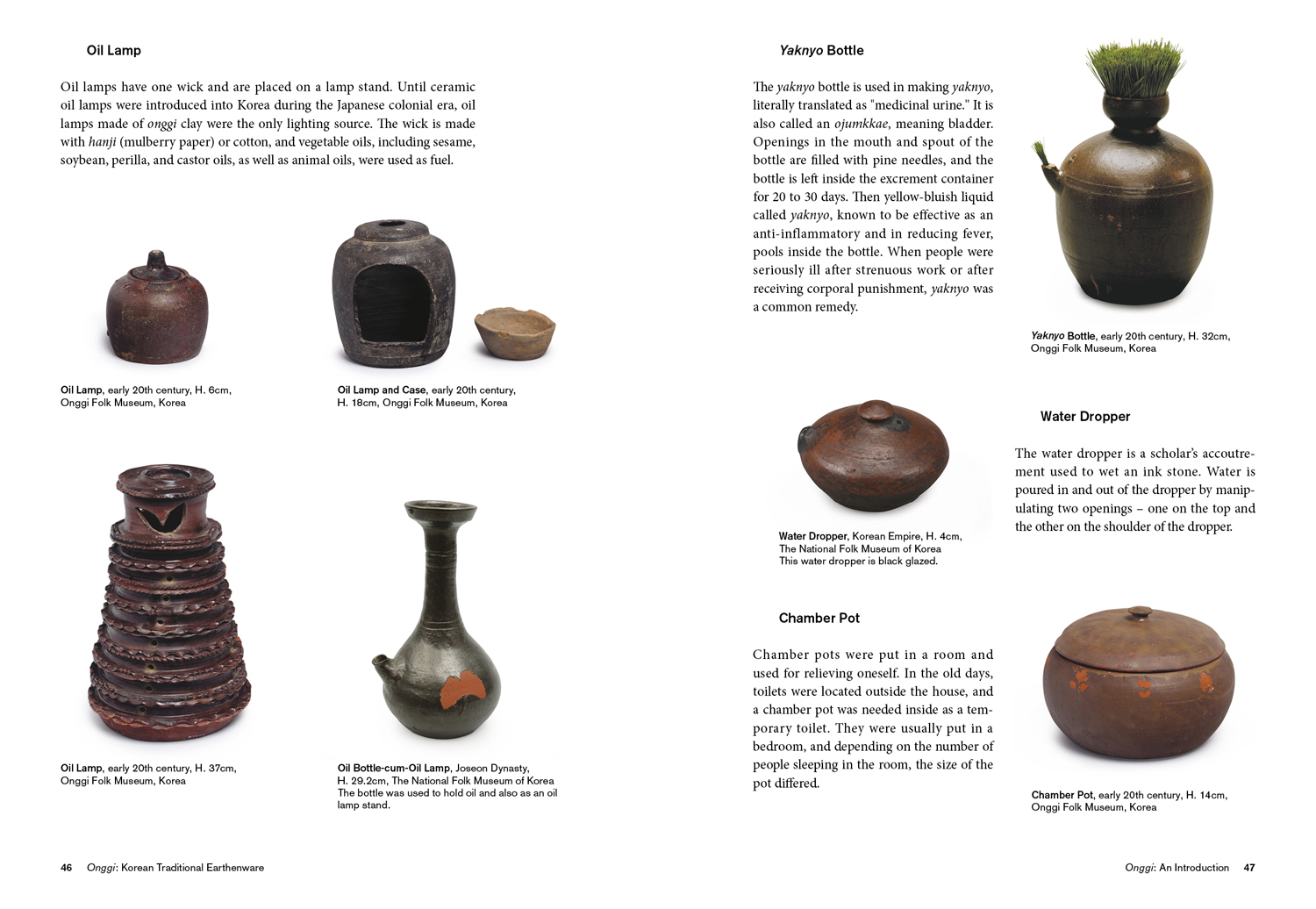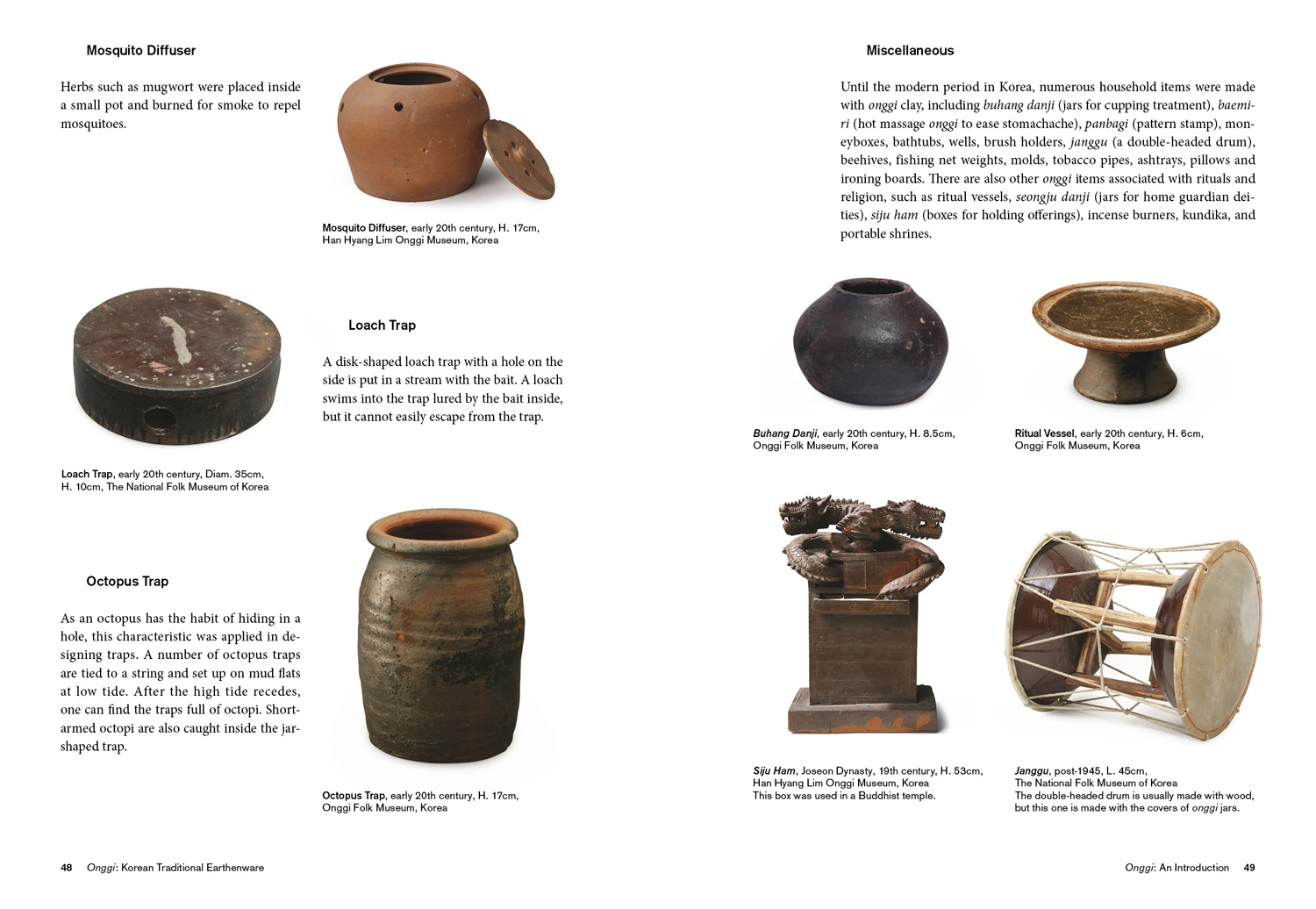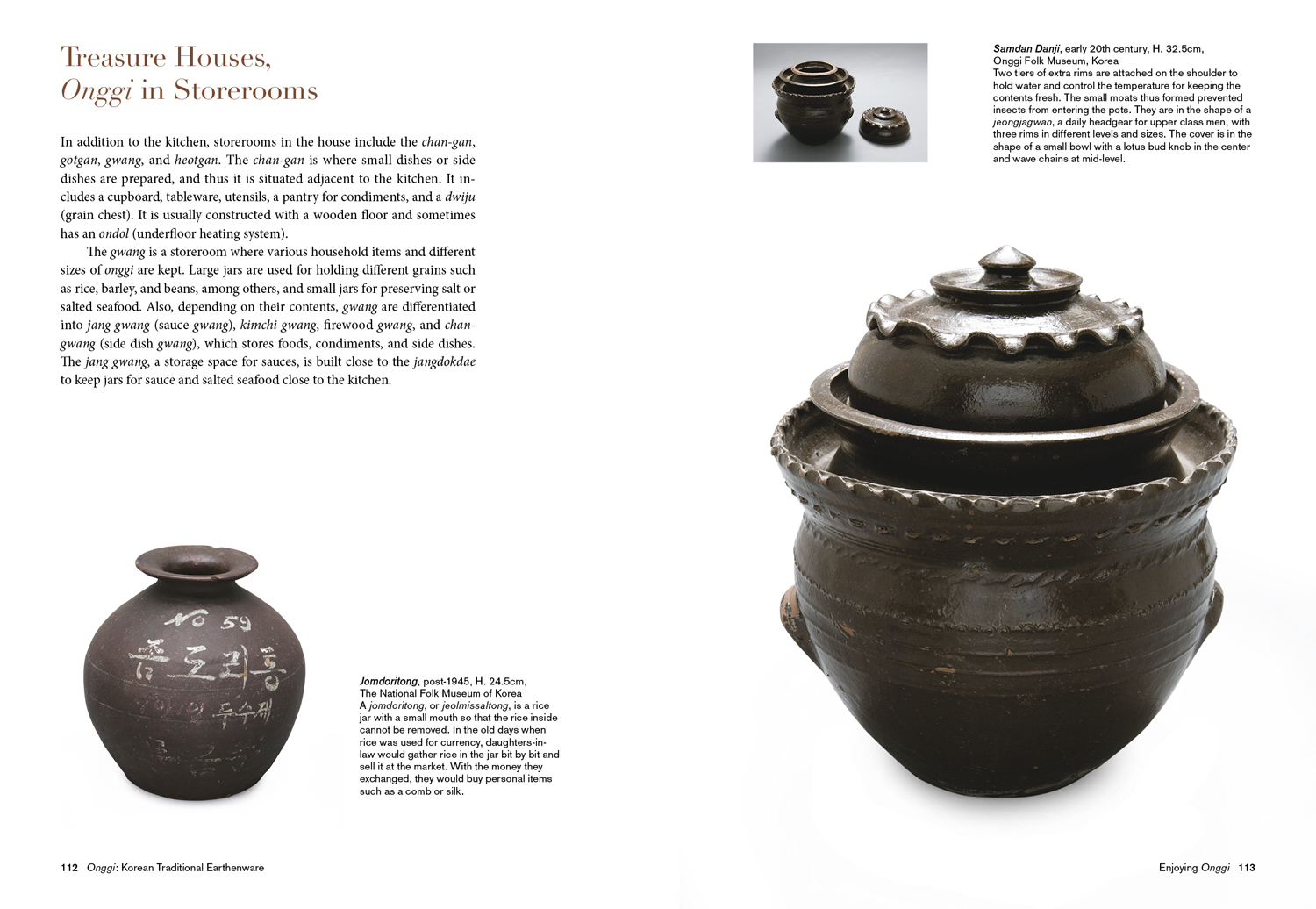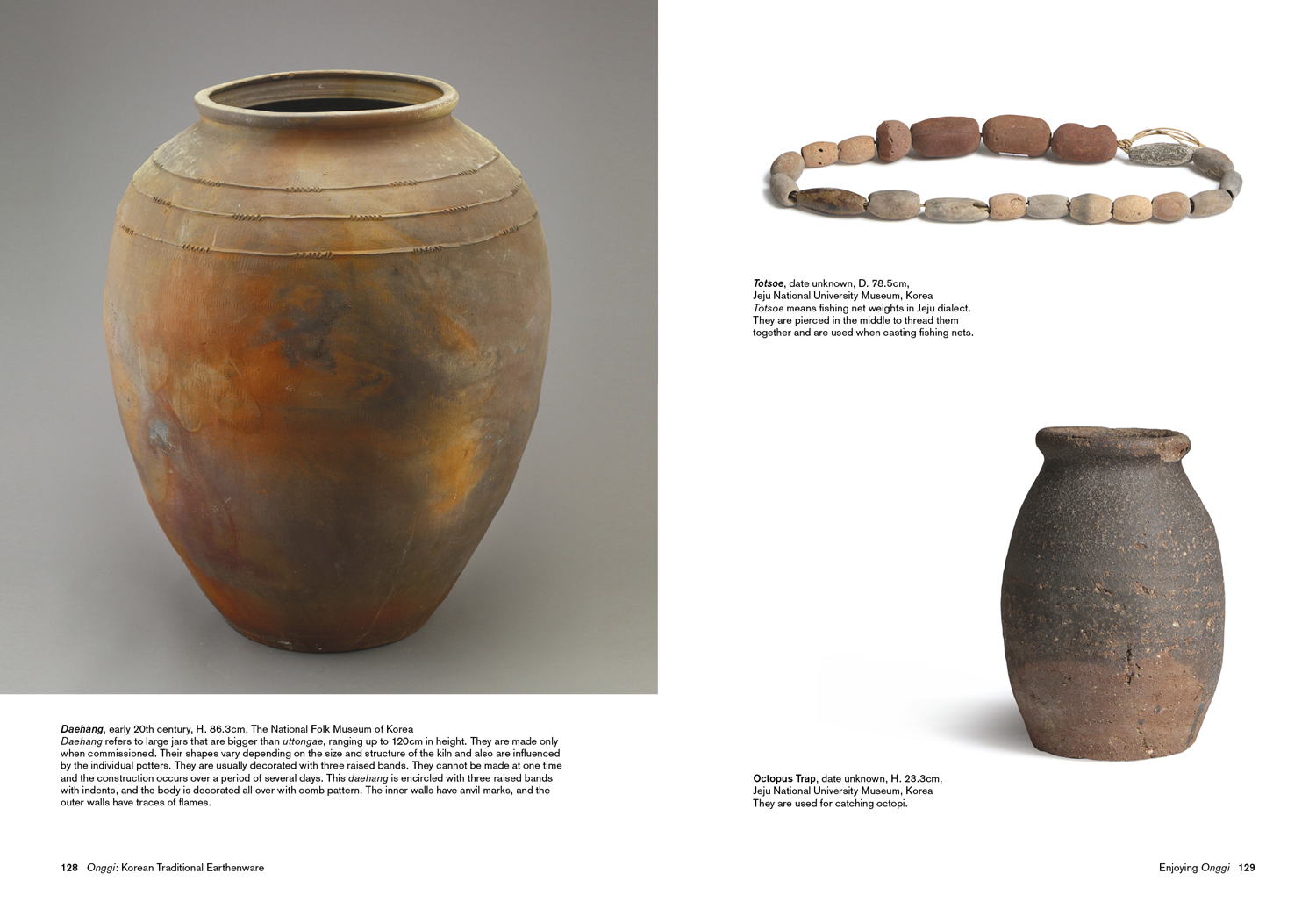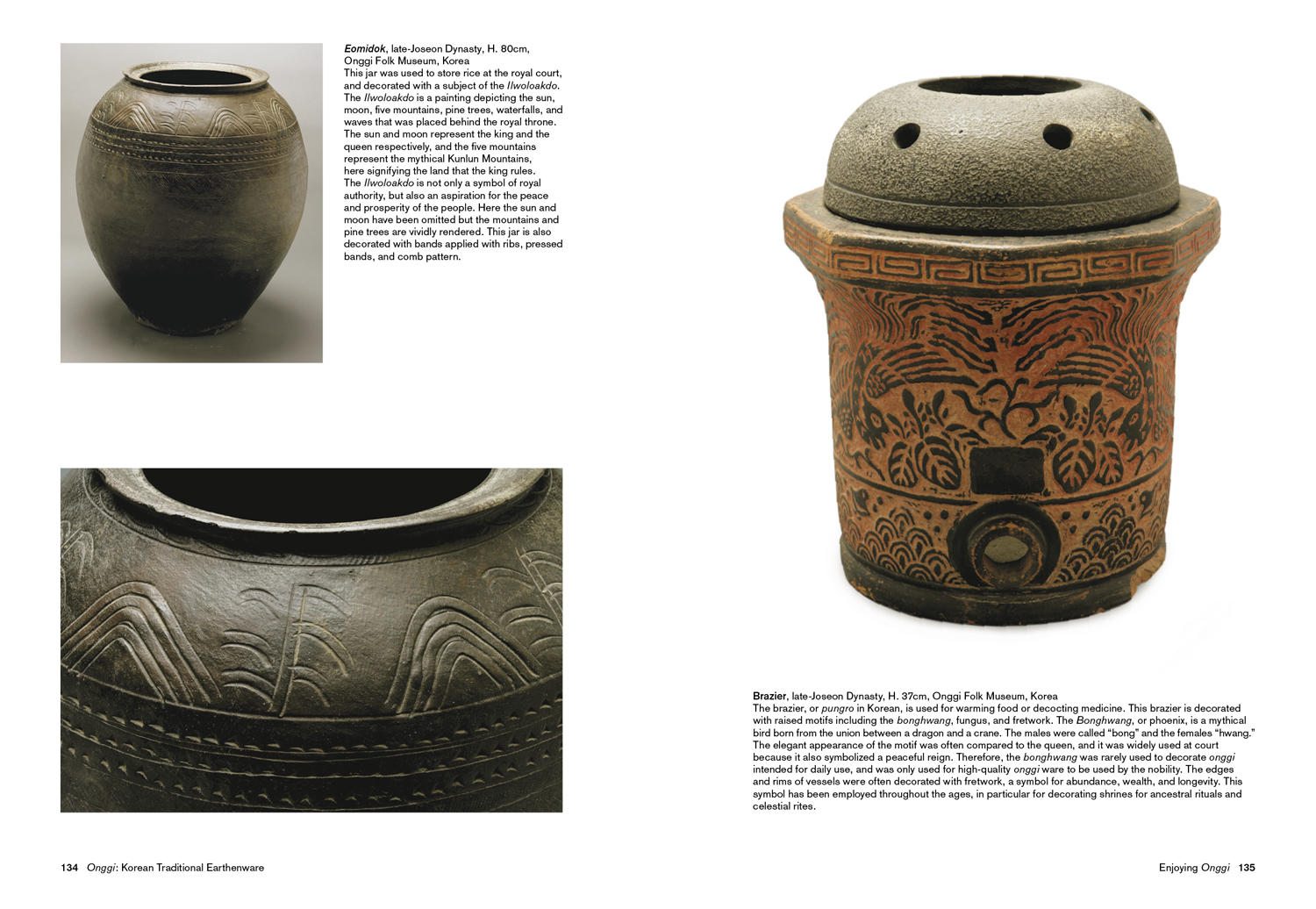분야별 도서 분야 별로 보는 미진사 도서
Onggi
Onggi: Korean Traditional Earthenware is intended to offer a “bird’s eye view” of Korean onggi.
“A book that presents the coarse yet simple and all-embracing onggi…”
Onggi, which was used extensively in everyday life by the laypersons, directly reflects the lifestyle and wisdom of our ancestors. The so-called jang culture comprised of fermented condiments including ganjang (soy sauce), doenjang (soybean paste), and gochujang (red pepper paste) and fermented foods including kimchi (salted and seasoned vegetables) and jeotgal (salted seafood) are deeply embedded in the lives of the Koreans. Such fermented condiments and foods were able to be produced thanks to the respiring onggi, and therefore onggi was an essential good in our lives. Onggi, which was a particular type of ware that was produced and used by anyone according to his or her needs, was used extensively not only as part of the dietary life but of life in general.
This book highlights such onggi from diverse perspectives and vividly reveals its characteristics and beauty. In this book, you will find everything about Korean onggi: the concept, history, types, materials and equipment, manufacturing processes, and specific examples of onggi ranging from the traditional to the contemporary through literature review, expert interview, and on-site documentation. To help readers’ understanding, a wealth of image resources (photographs, drawings, and tables, etc.) has been included. With clear traces of being planned to offer an easy and extensive understanding of onggi, the book is professional yet reader-friendly.
From the Publisher
Recommending This Book
Preface
Chapter 1. Onggi: An Introduction
Definition of Onggi
History of Onggi
The Various Uses of Onggi
Chapter 2. Materials and Tools for Making Onggi
Materials for Making Onggi
Facilities and Tools in Workshops
Kilns and Tools for Firing
Chapter 3. Making Onggi
Process of Making Onggi
Preparing Clay and Glaze
Shaping and Glazing
Firing
Chapter 4. Enjoying Onggi
Jangdokdae, Platform for Storing Onggi
Treasure Houses, Onggi in Storerooms
Onggi Furnished in the Kitchen
Onggi in Everyday Life
Jeju Onggi Shaped by Mother Nature
Spontaneous Decorations on Onggi
Distorted Onggi
Contemporary Onggi
Appendix
List of Masters
Crafts & Design Map
List of Plates
Bibliography
Collaborators
Index
Onggi: Korean Traditional Earthenware is published as part of “Publishing Project of the Korean Craft & Design Resource Book Series,” sponsored by the Ministry of Culture, Sports, and Tourism and implemented by the Korea Craft & Design Foundation. Korean Craft and Design Resource Book series published by the Korea Craft & Design Foundation provides a repository of knowledge and information regarding traditional Korean craft and techniques. It was intended not only for those already familiar with the subject matter but also for laypersons.
Onggi: Korean Traditional Earthenware is divided into four chapters: The first chapter “Onggi: An Introduction” discusses the following topics −the definition of onggi the characteristic features of Korean onggi and the types of onggi determined by the production method. The definition of onggi can be understood with a basis in its establishment and change over time. The first chapter reviews the historical flow from the emergence of onggi, which is in the same form as the present, of the Goryeo period, through to the onggi covered with yellow-brown glaze. Moreover, it explores the diverse types of onggi in accordance with their usage. The second chapter, “Materials and Tools for Making Onggi” presents the raw materials, tools, and kilns that are required for making onggi. It introduces not only conventional facilities and tools, but also modern-style machinery, tools, and facilities that are already widely used in the present day. As for kilns, the second chapter explores those featuring regional characteristics including the jodaebultonggama kiln of the west coast and the noranggul cave and geomeungul cave kilns built with rocks of the Jejudo Island region. The third chapter “Making Onggi” presents the overall production process of onggi with a focus on glazed onggi crocks together with other methods with different detailed processes. Onggi is generally produced through a four-step process: preparing the clay and glaze; shaping; decorating and glazing; and firing. The process of shaping and firing slightly differs according to form and type. The greatest difference in the production of jilgeueut (unglazed low-fire earthenware), puredogi (high-fire earthenware) and onggi lies in firing. This chapter presents a look into how kilns are fired differently. The fourth chapter “Enjoying Onggi” allows an opportunity to enjoy the past and present of Korean onggi. It lists onggi objects according to the
place in which they were used, and also illustrates the onggi of Jejudo Island known for their unique color and designation. Also featured are dented and soldered onggi, and this is another characteristic of onggi –using dented and broken ware in one way or another. The section “Onggi of Today” features works of potters maintaining tradition with the materials, technique, and style of traditional onggi in line with those produced by those designated as Intangible Cultural Property or Master Onggi Potter and also works that reflect a contemporary twist in shape and decoration while maintaining the materials and technique of traditional onggi.
In order to reflect upon and to convey the value of Korean onggi, Onggi: Korean Traditional Earthenware is written upon discussion with many different experts. Notwithstanding its modest size, Onggi: Korean Traditional Earthenware seeks to offer a glimpse into all aspects of Korean onggi. It is hoped that this book will contribute to a better understanding of the past and present of Korean onggi and continuing the tradition.


